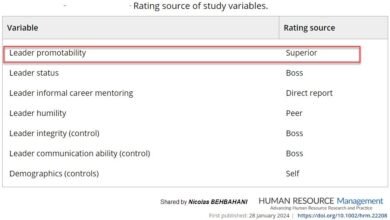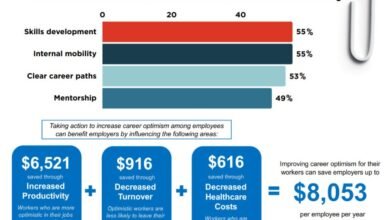
By | Dilshad Durani
In the ever-evolving landscape of human resources (HR) management, continuous learning and development are essential for staying competitive and meeting the evolving needs of organizations and employees alike. With the rise of technology, online learning has become increasingly popular, offering flexibility and accessibility to learners worldwide. However, simply delivering content through traditional online courses may not always suffice. To truly engage learners and facilitate meaningful interactions, HR professionals are turning to innovative methods such as live streaming.
Evolution of HR Training
Gone are the days of traditional classroom-based training as the sole method for HR professionals to acquire new skills and knowledge. Today, technology has revolutionized the way we learn, enabling access to a wealth of resources and expertise from anywhere in the world.
Online courses, webinars, and virtual workshops have become commonplace, allowing HR professionals to upskill and reskill on their own terms. However, the challenge lies in creating engaging and interactive learning experiences that mirror the dynamic nature of face-to-face training.
Live Streaming Entry in Human Resource Management
Live streaming has emerged as a powerful tool for enhancing online learning experiences, offering real-time interaction and collaboration among participants. Unlike pre-recorded videos or static content, live streaming allows for immediate engagement, feedback, and Q&A sessions, fostering a sense of community and connection among learners.
For HR professionals tasked with training and development initiatives, integrating live streaming into online courses presents a myriad of opportunities to elevate the learning experience.
Innovative Ways to Incorporate Live Streaming into HR Training
In the fast-paced world of Human Resources (HR), staying ahead of the curve is essential. As the landscape of work continues to evolve, so do the methods of training and development within organizations. One of the most powerful tools in this evolution is live-streaming technology.
According to the IMARC Group report the live-streaming market worldwide reached around 70.2 Billion in 2023. The market is projected to reach around US$ 520.7 Billion by 2032, exhibiting 24.93% CAGR growth during 2024 and 2032.
Source: (IMARC Group)
By integrating live streaming into HR training, organizations can create dynamic, engaging, and effective learning experiences for their employees. In this blog, we’ll explore some innovative ways to leverage live streaming in HR training.
Virtual Workshops and Seminars
Host live-streaming workshops and seminars on relevant HR topics such as employee engagement, diversity and inclusion, or performance management. Invite industry experts or thought leaders to share their insights and facilitate discussions. Live streaming allows participants to interact in real time, ask questions, and exchange ideas, creating a dynamic learning environment.
Interactive Q&A Sessions
Incorporate live-streaming Q&A sessions into your online courses to address specific challenges or questions raised by participants. These sessions can feature HR professionals from your organization or guest speakers who provide practical advice and solutions. Encourage participants to submit their questions in advance and engage in live discussions during the session.
Virtual Training Simulations
Use live streaming to conduct virtual training simulations that simulate real-life HR scenarios. This interactive approach allows participants to role-play different situations, make decisions, and receive immediate feedback from instructors or peers. Virtual simulations enhance learning retention and help participants apply theoretical knowledge to practical situations effectively.
Peer Learning Communities
According to a better approach to mentorship study by Harvard Business Review, employees who receive mentoring are promoted five times more often than those who do not. Create virtual peer learning communities where participants can collaborate, share best practices, and support each other’s learning journey.
Use live streaming to facilitate group discussions, case studies, or peer-to-peer coaching sessions. These communities foster a sense of belonging and encourage continuous learning and professional development among participants.
Guest Speaker Series
Organize a guest speaker series featuring industry leaders, HR professionals, or motivational speakers who can provide valuable insights and inspiration to participants. Utilize live streaming to broadcast these sessions to a wider audience, including employees from different locations or departments within your organization. Guest speaker series not only enrich the learning experience but also showcase diverse perspectives and expertise within the HR community.
Benefits of Live Streaming in HR Training
In today’s digital age, the landscape of HR training is constantly evolving, and organizations are increasingly turning to innovative methods to enhance the learning experience for their employees. Live streaming technology has emerged as a powerful tool in this regard, offering a wide range of benefits for HR training initiatives. Let’s explore some of the key advantages of incorporating live streaming into HR training:
Accessibility and Flexibility
Live streaming allows employees to participate in training sessions from anywhere with an internet connection, eliminating the need for travel and accommodating diverse work schedules. According to a survey by Global Workplace Analytics, remote work has grown by 159% between 2005 and 2017, indicating a growing need for flexible training options.
Live streaming allows organizations to cater to the needs of remote and geographically dispersed teams, ensuring that all employees have equal access to training opportunities. This accessibility and flexibility make it easier for employees to engage with training content and participate in professional development opportunities, regardless of their location or time zone.
Real-Time Interaction
One of the most significant advantages of live streaming is the ability to facilitate real-time interaction between trainers and participants. Unlike pre-recorded videos or static online courses, live streaming allows for immediate feedback, Q&A sessions, and discussions, creating a dynamic and engaging learning environment. Participants can ask questions, share insights, and collaborate with their peers in real time, enhancing the overall learning experience.
Cost-Effectiveness
Live streaming can be a cost-effective solution for HR training, particularly for organizations with distributed teams or limited training budgets. Organizations that use video conferencing for training purposes reduce travel costs by an average of 30%. By leveraging live streaming technology, organizations can deliver high-quality training content to employees without incurring the expenses associated with traditional training methods.
By eliminating the need for travel, venue rentals, and printed materials, live streaming helps reduce training costs while still delivering high-quality content to employees. Additionally, the scalability of live streaming allows organizations to reach a larger audience without incurring additional expenses.
Enhanced Engagement and Retention
Live streaming captivates participants’ attention and keeps them actively engaged throughout the training session. The interactive nature of live streaming, with features such as polls, quizzes, and live chat, encourages participation and facilitates knowledge retention. By incorporating interactive elements into training sessions, HR professionals can create memorable learning experiences that resonate with participants long after the session ends.
Geographical Reach
Live streaming breaks down geographical barriers and enables organizations to reach a wider audience with their training initiatives. Whether employees are located in different offices, regions, or countries, live streaming ensures that everyone has equal access to training content and opportunities for professional development. This geographical reach fosters a sense of inclusivity and collaboration among employees, regardless of their physical location.
Scalability and Efficiency
With live streaming, HR departments can scale their training initiatives more efficiently to accommodate growing workforce needs and evolving business requirements. Whether it’s a small team meeting or a company-wide training session, live streaming can easily adapt to the size and scope of the audience. This scalability ensures that training resources are utilized effectively and that all employees have access to the training they need to succeed in their roles.
Best Practices for Implementing Live Streaming in HR Training
Implementing live streaming in HR training requires careful planning and consideration to ensure a seamless and effective learning experience for participants. Here are some best practices to keep in mind when incorporating live streaming into HR training initiatives:
Define Clear Objectives
Before implementing live streaming, clearly define the learning objectives and desired outcomes for each training session. Determine what knowledge, skills, or behaviors participants should gain from the training and tailor the content accordingly. Setting clear objectives will help guide the development of the training program and ensure alignment with organizational goals.
Select the Right Platform
Choose a reliable OTT platform script or live streaming platform that meets the needs of your organization and participants. Consider factors such as ease of use, compatibility with existing systems, scalability, and security features. Test the platform thoroughly before the training session to identify any potential issues and ensure a smooth streaming experience for participants.
Invest in Quality Equipment
Invest in high-quality audiovisual equipment, such as cameras, microphones, and lighting, to ensure professional-quality live streaming. Poor audio or video quality can detract from the learning experience and negatively impact participant engagement. Test the equipment in advance to ensure optimal performance during the training session.
Promote Participant Engagement
Keep participants engaged throughout the live streaming session by incorporating interactive elements such as polls, quizzes, and live chat. Encourage participants to ask questions, share insights, and participate in discussions to foster active learning and collaboration. Designate a moderator or facilitator to manage participant engagement and address any technical issues that may arise.
Provide Clear Instructions
Provide participants with clear instructions on how to access and participate in the live streaming session. Include information on how to join the session, interact with the facilitator and other participants, and troubleshoot common technical issues. Communicate any pre-session requirements or materials that participants may need to review beforehand.
Offer Multiple Engagement Channels
Offer multiple channels for participant engagement, such as live chat, social media, or dedicated discussion forums, to accommodate different learning preferences and communication styles. This allows participants to engage with the content and each other in a way that best suits their needs and preferences.
Collect Feedback and Evaluation
Gather feedback from participants after the live streaming session to assess its effectiveness and identify areas for improvement. Use surveys, polls, or post-session discussions to collect feedback on the content, delivery, and overall learning experience. Use this feedback to inform future training initiatives and make adjustments as needed.
Provide Technical Support
Ensure that participants have access to technical support resources in case they encounter any issues during the live streaming session. Provide contact information for technical support staff or a dedicated help desk where participants can seek assistance with troubleshooting technical issues or accessing the live streaming platform.
Practice Moderation and Time Management
Practice moderation and time management during the live streaming session to ensure that the content stays on track and that participants have ample opportunity to engage with the material. Set clear time limits for each segment of the training and allocate time for participant questions and discussion. Keep the pace of the session lively and engaging to maintain participant interest and attention.
Continuous Improvement
Continuously evaluate and improve the live streaming training program based on participant feedback, technological advancements, and emerging best practices. Regularly review the content, delivery methods, and engagement strategies to ensure that the training remains relevant, effective, and engaging for participants.
Conclusion
Incorporating live streaming into HR training represents a significant opportunity to enhance the learning experience, engage participants, and drive meaningful outcomes for organizations.
By leveraging innovative approaches such as virtual workshops, interactive Q&A sessions, training simulations, peer learning communities, and guest speaker series, HR professionals can create dynamic and impactful learning experiences that resonate with today’s learners. As technology continues to evolve, embracing live streaming as a tool for HR training can help organizations stay agile, adaptive, and competitive in the ever-changing business landscape.
Remember, the key to success lies in strategic implementation, continuous evaluation, and a commitment to fostering a culture of lifelong learning and development within your organization.
Together, let’s harness the power of live streaming to elevate HR training to new heights and empower professionals to thrive in the digital age.
Author Bio:
Dilshad Durani is a seasoned Digital Marketer and Content Creator currently contributing her expertise to the dynamic team at Alphanso Technology, a leading company specializing in event management system in PHP and open-source event ticketing system development. Her insatiable curiosity fuels a relentless pursuit of knowledge, driving her to unravel the intricacies of changing trends, evolving marketing approaches, and ethical business practices.






